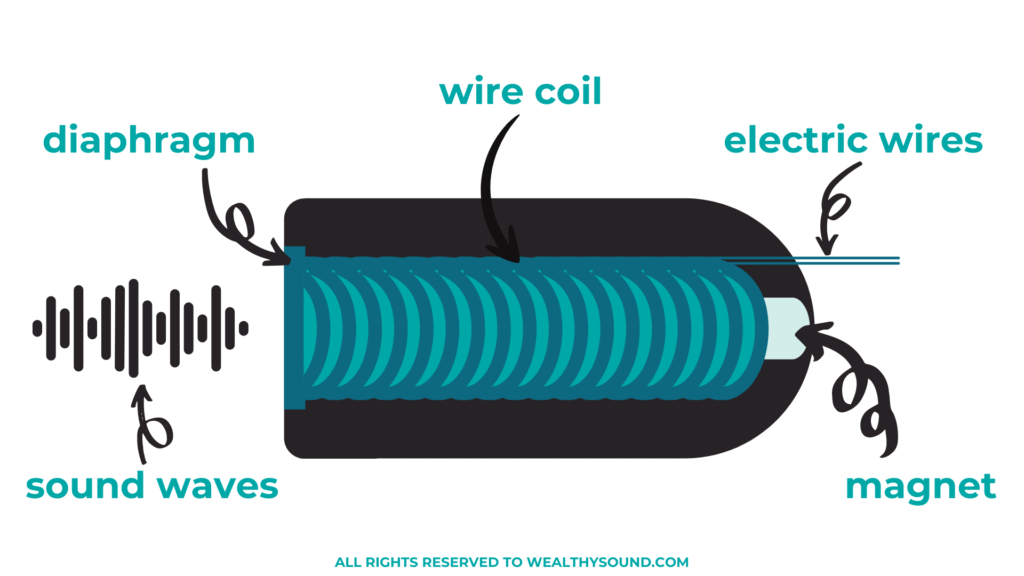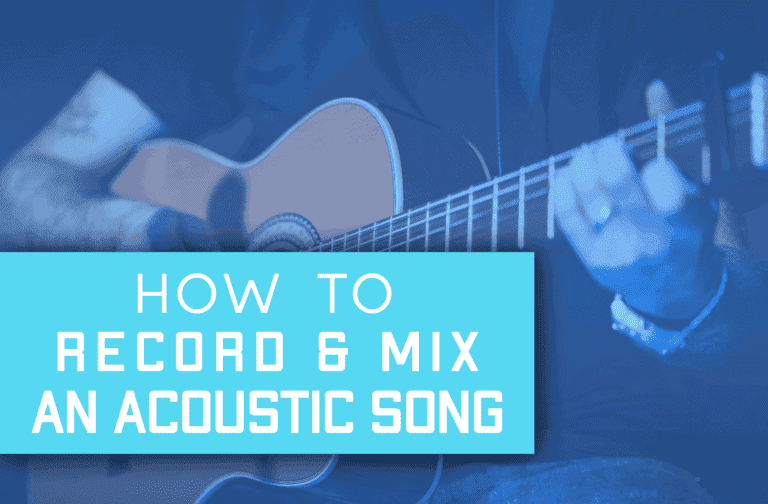So, you’re starting your way in the music industry, or maybe you just want to record yourself in a way that sounds better than your smartphone, and you’re looking for a microphone to buy.
At first, everything seems easy. The expensive microphones should probably be better for you than the cheap ones, right? Well, that might not be the case.
The more expensive mics are usually what’s called “Condenser” microphones, and the cheaper mics are usually “Dynamic” microphones, and either one of them could be right for you regardless of the price. This is how you find out:
Dynamic microphones are really durable and filter noises extremely well. Therefore, they are mostly used in live shows. Condenser mics, on the other hand, aren’t as durable and don’t filter noises. However, they give a much more natural sound and are an industry standard for recording in the studio.
In the rest of the article, I’ll dive deeper into each of the microphone types, talk about each type’s pros and cons, how each of them is built, and cover the specific situations where you should probably go against your instincts, and use one type over the other.
What Are Dynamic Microphones & What Are They Used For

Dynamic microphones filter noises extremely well and are relatively cheap and durable. However, due to low sensitivity, they sometimes sound too dark and lack high frequencies. People mostly use them today in places with a lot of background noise like live shows, or for podcasts.
I’d recommend using a dynamic microphone in one of the following cases:
- You’re a beginner who’s looking to start recording without breaking the bank.
- You want to use it for a live show / podcast or other places where noise filtering is important.
| Pros | Cons |
| Filter noises and interruptions easily | Not sensitive to high frequencies |
| Are relatively cheap | Hard to use for studio recordings |
| Really durable | Sound a little too dark sometimes |
How Are Dynamic Microphones Built?
Dynamic microphones consist of the following parts:
- Diaphragm – A thin, flexible movable membrane.
- Wire Coil – An electrical conductor designed to produce a magnetic field.
- Magnet – An object that produces a magnetic field.
Dynamic microphones work by converting sound waves into electric signals. The diaphragm moves in response to sound waves and causes the magnet to move as well. Then, the movement creates an electric current that is sent through a wire coil and is then converted into an audio signal.
Have a look at this illustration to better understand it:

What Are Condenser Microphones & What Are They Used For

Condenser microphones are extremely accurate and provide a great sound that is easily usable for studio tracks. However, they might be expensive and break after only one fall. Most people use condenser mics when recording in acoustically treated rooms or when recording multiple instruments.
I’d recommend using a condenser microphone in one of the following cases:
- You’re recording in an acoustically treated room with little to no noise
- You want to record a group of people / multiple instruments at the same time and can only afford one microphone.
| Pros | Cons |
| Incredibly accurate & sensitive | Extremely sensitive to noise |
| Provide a natural sound | Might distort at really loud input levels |
| Useable In studio recordings | Might be a little expensive |
| Viable for recordings groups / multiple instruments at once | Breaks easily at falls |
How Are Condenser Microphones Built?
Condenser microphones consist of the following parts:
- Diaphragm – A thin, flexible movable membrane.
- Backplate – A thin, flexible unmovable membrane.
- Diaphragm Case – A case that holds everything together.
- Battery/Phantom Power – Used to obtain the electric voltage.
When a sound wave hits the diaphragm, the distance between the two plates changes and causes a change in an electrical characteristic called capacitance. The capacitance then produces the electrical signal corresponding to the sound that’s picked up.
Have a look at this illustration to better understand it:

Which Are Better: Condenser Or Dynamic Microphones?

When it comes down to deciding which microphone to pick, I always ask myself these two questions:
- Where am I going to use it at – If I’m planning on using it at my studio for professional recordings I’d probably get a condenser mic, and if I’m planning on using it for live shows / concerts I’d probably get a dynamic mic.
- What am I going to record with it – If I’m planning on using it to record single instruments in a studio I’d get a condenser mic without a doubt. However, even if I’m planning on using it live to record groups – I’d probably get a condenser mic.
When Are Condenser Mics Better?
Condenser mics are better when recording in studios and acoustically treated rooms, or when recording multiple instruments/people at the same time on stage. It’s not recommended to use condenser mics if there’s any risk that it’d fall or get any hits as they’re easily breakable.
When Are Dynamic Mics Better?
Dynamic mics are perfect for live shows, and other places that have quite some background noise. Other people that use dynamic microphones are podcasters, and radio stations as it has become a standard in those industries.
Which Type Of Microphone Should You Use In Every Situation?
Do Singers Use Dynamic Or Condenser Microphones?
It depends on where they use it. Most singers use a dynamic microphone when singing live, and a condenser microphone when recording in the studio. Since the condenser microphones have such a natural sound, and balanced frequency response, they’re just more suited for vocals.
Which Type Of Microphone Should You Use For Guitars?
If you record guitars in your studio, a condenser mic is a right choice. However, if you record it at a live show, you probably should go with a dynamic mic as it filters noises extremely well.
Which Type Of Microphone Should You Use For Drums?
As opposed to most other instruments, you might want to record your drums with a dynamic microphone since they output an extremely loud sound that may make your condenser microphones distort.







